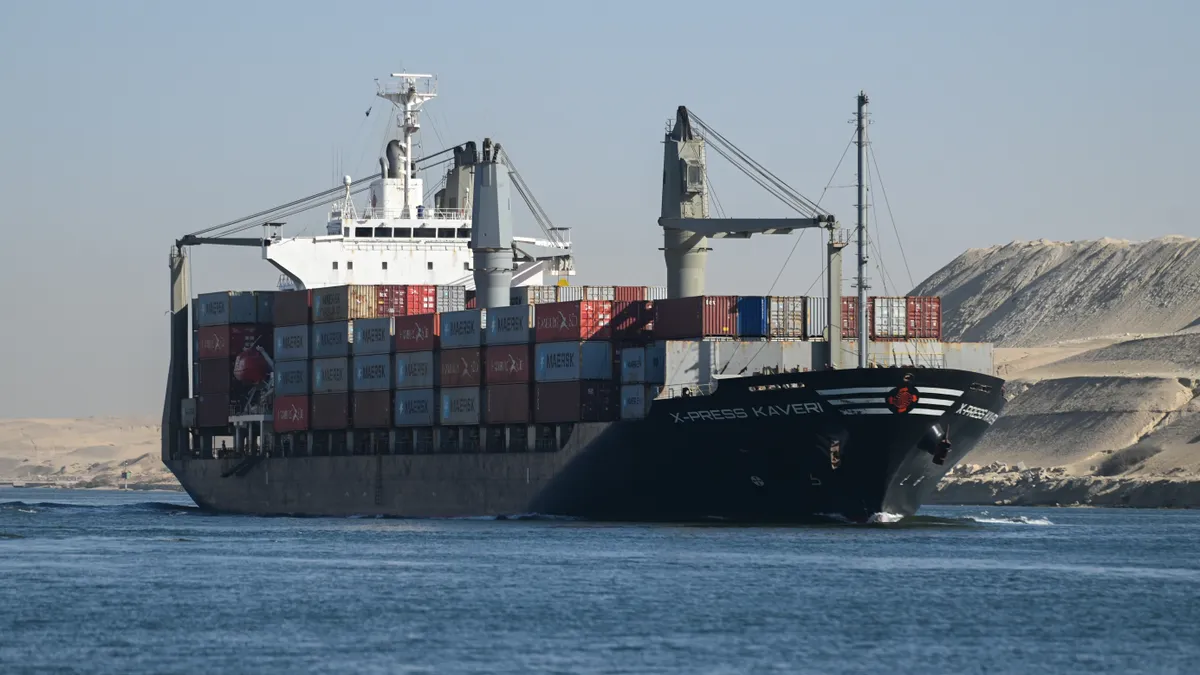WASHINGTON — The U.S. economy may be at risk due to the Red Sea disruptions, stakeholders warned regulators during a hearing this week.
The House of Representatives' Coast Guard and Maritime Transportation subcommittee held a hearing on Tuesday to evaluate the emerging challenges posed by ongoing attacks on commercial shipping along the Red Sea. Shipping experts warned of possible congestion and higher inflation if the situation prolongs.
The Red Sea vessel attacks from Houthi rebels have already caused a ripple effect for supply chains. As carriers have rerouted several vessel services, transit times and ocean shipping rates have gone up significantly. In turn, some shippers like Ikea have already reported delays and constraints for certain products.
"We saw firsthand during the pandemic what a significant supply chain crisis can do to the global economy, and we must not let it happen again," Rep. Daniel Webster, a Republican from Florida and the committee’s chairman, said during his opening remarks.
Congestion at the ports, again?
The situation along the Red Sea is pushing shippers to bring back cargo through the West Coast which was lost during the port labor negotiations.
"[NRF members] have decided to bring cargo into the West Coast ports and then use intermodal rail to get the cargo back to the East Coast, where it was intended," Jonathan Gold, the National Retail Federation's VP of supply chain and customs policy, told regulators.
Gold said the NRF is already hearing that rail dwell times are starting to tick up, and that rail car imbalances combined with increased demand could later lead to even greater congestion and dwell. Harkening back to the pandemic-era congestion, he also called regulators' attention to some of the other root causes behind port inefficiencies at the time.
"We need to make sure there is chassis availability as well," Gold said. “One of the biggest drivers of congestion during the pandemic was the lack of available chassis."
However, Bud Darr, MSC's EVP of maritime policy and government affairs, cautioned regulators any issues caused by the Red Sea disruptions may look different than those seen during the pandemic-era port congestion.
"You can't look at one particular port or one particular service loop," Darr said. "You have to look at how it fits with the broader system, particularly where it intersects with ports and interfaces with the shore side component of what it takes to keep supply chains moving."
While during the pandemic, congestion was due to U.S. land-based logistics being overwhelmed, he said the current situation is based more on changes to maritime schedules and service rotations.
Longer transit times, freight and logistics costs driving inflation
Changes in service routes also put rates and ocean shipping transit times at risk.
“Diverting around the [Cape of Good Hope] requires significant adjustments to our global network to, among other things, add additional vessel capacity, make schedule changes, connect with transshipment points, and reposition equipment,” Darr said.
These adjustments result in increased costs, he said. Not only will costs rise but these network changes have knock-on effects beyond the services that would typically transit through the Red Sea.
Gold said retailers are adding an additional 10 to 14 days of transit time to their supply chains to accommodate for longer vessel times. And with added costs, consumers face the risk of paying higher prices if the situation persists.
"I’ve had one member tell me they have had carriers ask for an increase of $1,500 to $3,000 per container, which represents a 38% to 73% cost increase for directly affected cargo," he said.
The future impacts from the Red Sea crisis are expected to be prolonged and costly, according to Ian Ralby, CEO of I.R. Consilium, a company specializing in maritime law.
"The cost of everything is likely to increase, given the integrated nature of supply chains," he said.
While the focus so far has been on energy supplies such as oil and gas — which are fungible commodities that can be rerouted more easily — he said containerized traffic is more at risk, since "specific goods have to get to specific destinations."
"Disrupting the 30% of global container traffic that traverses the Red Sea will therefore have a greater impact on the economy than the 10% of oil that traverses the same passage,” Ralby said.
Rep. Salud Carbajal acknowledged the vast impact the crisis could have, noting about 12% or 1 trillion of global trade passing through the Red Sea.
"The U.S. and global economy will be affected by this crisis in the Red Sea," Carbajal, a Democrat from California, said. "The only question is 'How much?'”















